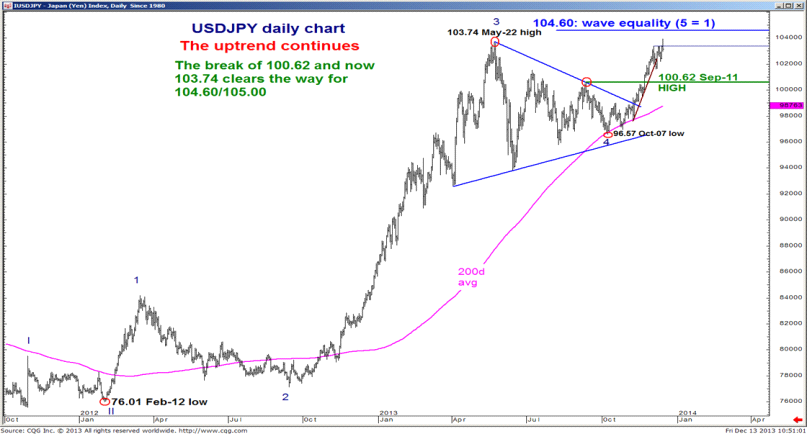Beware of the overlap trap
Post on: 20 Апрель, 2015 No Comment

When you walk into a shoe store in the United States, you probably have a pretty good idea of your shoe size—maybe its a mens 9. But if you need to buy shoes in Europe, do you know you need a size 8½ in London or a size 42 in Frankfurt?
Labeling of size matters in investing too. And while size may seem a simple concept, it can be confusing—just like buying a pair of shoes in a foreign country.
Consider a simplified example of a portfolio with three U.S. equity index funds: a large-capitalization ETF plus a mid-cap and a small-cap ETF. Is this investors portfolio market-proportional?
You may be surprised to learn that the answer is no. The stock of restaurant chain Chipotle Mexican Grill helps illustrate why not.
Chipotle is included in the Standard & Poors 500 Index, which represents the largest U.S. companies by market cap, as ranked by S&P. Chipotle is also included in the CRSP US Mid Cap Index of 300-plus medium-sized companies.¹ But as the TV infomercials say, “But wait, theres more.” Harley-Davidson and a host of other companies are included in both indexes.
Are you beginning to detect a pattern here? There can be significant overlap between the indexes of various index providers.² Take the S&P 500 Index and the CRSP US Mid Cap Index: Fully two-thirds of the companies classified as mid-cap by CRSP are also in the large-cap S&P 500 Index (where they represent a much smaller share of the index of corporate giants). How does this overlap happen and how can you avoid the overlap trap in your clients portfolios?
The answer lies in understanding index construction methodology.
When large is medium
Some index providers divide the U.S. equity universe into two groups by size: large and small. An example of this approach is the Russell 1000 and Russell 2000 index series. Other index providers, including CRSP, slice the market into three size categories—mega-, mid-, and small-cap—and offer combinations such as large-cap indexes composed of mega- plus mid-cap companies.³
In other words, an index labeled large may include midsize companies, too. As a result, a portfolio of large-, mid-, and small-cap ETFs based on a family of indexes using the second approach would, perhaps unwittingly, overweight mid-cap stocks relative to the broad U.S. market.
Thats fine if a client is seeking above-market exposure to mid-caps. But if the clients asset allocation target is a market-proportional portfolio, that objective wont be met—and the portfolio can’t be expected to achieve the intended broad-market-tracking results.
Putting the building blocks to work
Given the potential confusion in index names, and the need to pay attention to size definitions, its tempting to ask: Why not own a total U.S. stock market ETF to gain broad U.S. exposure? That is, of course, a simple alternative to the building-block approach, and one that Vanguard often recommends. But here are some other points to consider:
- You or your client may have high regard for a given large-cap active manager whom you want to manage core portfolio assets. You can complement that allocation with a small-cap index ETF, to gain broad-market exposure.
- Selecting single ETFs of various market-cap sizes gives you the opportunity to over- or underweight a particular size segment consistent with a clients investment outlook, if you so choose.
- And investing in separate ETFs may provide tax-planning opportunities, e.g. the ability to realize portfolio gains or losses.

So if you and your clients want more exposure to large-cap companies—perhaps because you believe they are better at weathering economic storms—recognize that a large-cap index fund may hold several midsize company stocks too.
As always, its important for your clients to know what they own and why they own it.
________________________________________
1 During 2013, many of Vanguards U.S. equity index funds switched to indexes developed and maintained by the Center for Research in Security Prices (CRSP)—high-quality, well-constructed benchmarks that provide long-term cost certainty for our shareholders. For more information on Vanguards major benchmark-change project, see the Benchmark changes: A client decision blog by Martha King, managing director of Vanguard Financial Advisor Services™ and head of U.S. Financial Intermediaries.
2 There can also be overlap between indexes within the same provider family. For example, a company can be classified as both small-cap and mid-cap, depending on the providers index construction rules.
3 The CRSP US Large Cap Index seeks to include 85% of the total investable market capitalization of U.S. companies. To do so, this index is built of two components: the CRSP US Mega Cap Index (representing the top 70% of companies by market cap) and the CRSP US Mid Cap Index (representing companies that fall in a band between the top 70% and the top 85%). And just to complete the pie, the CRSP US Small Cap Index captures companies that fall between the top 85% and top 98% of the U.S. investable market.
Please remember that all investments involve some risk. Be aware that fluctuations in the financial markets and other factors may cause declines in the value of your account. There is no guarantee that any particular asset allocation or mix of funds will meet your investment objectives or provide you with a given level of income. Prices of mid- and small-cap stocks often fluctuate more than those of large-company stocks.
Diversification does not ensure a profit or protect against a loss.














